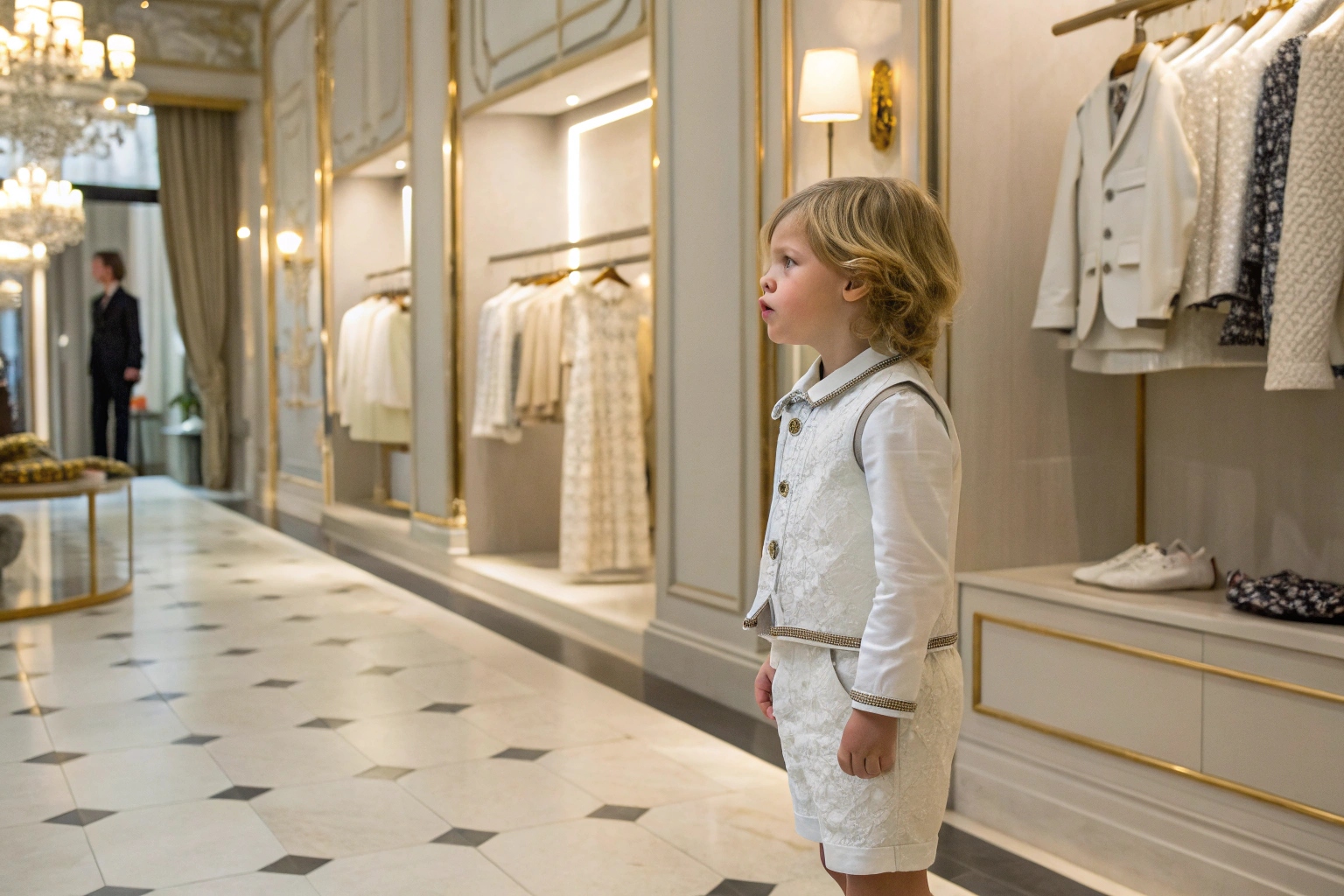From logo-covered rompers to miniature runway looks, designer kidswear is everywhere. But behind the fashion lies a deeper question—are we teaching the right values?
Whether it’s ethical to dress children in designer clothes depends on the intent, impact, and context—it’s not about the label itself, but what it represents.
This article explores the social, psychological, and environmental concerns surrounding luxury fashion for kids.
What Are the Social Impacts of Kids Wearing Luxury Brands?
Designer clothes can make a child stand out—but that visibility can sometimes create more harm than good in social settings.
Wearing luxury brands may unintentionally reinforce class divides among children, creating peer pressure, exclusion, or entitlement in social and school environments.
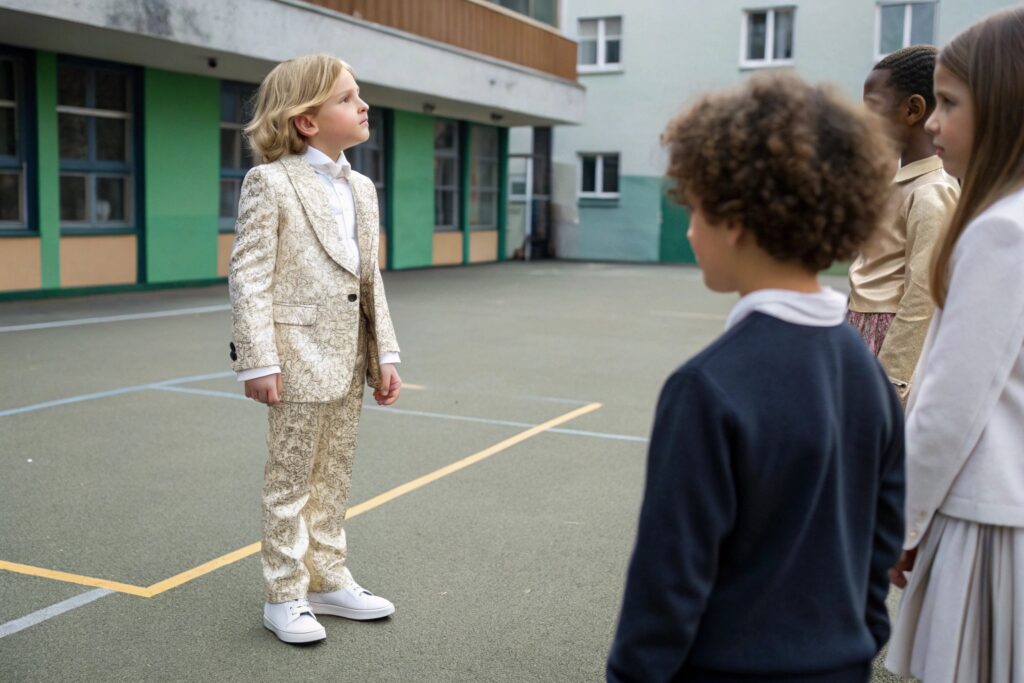
Social dynamics at play:
| Impact Area | Possible Consequences |
|---|---|
| Peer relationships | Kids may be judged or excluded based on labels |
| Comparison culture | Sparks unhealthy competition at a young age |
| School policy clashes | Some dress codes prohibit visible branding |
| Class visibility | Highlights wealth differences among children |
Children are quick to notice differences, and luxury labels can become a status symbol—even when kids themselves don’t understand brand value.
For many parents, the ethical question is: Are we helping our kids connect—or compete?
How Designer Fashion Affects a Child’s Self-Image and Values?
Children learn about identity through what they wear. When brand value becomes part of self-worth, it can shape how they see themselves—and others.
Dressing kids in designer labels too often may teach them that appearance and status are more important than creativity, kindness, or individuality.
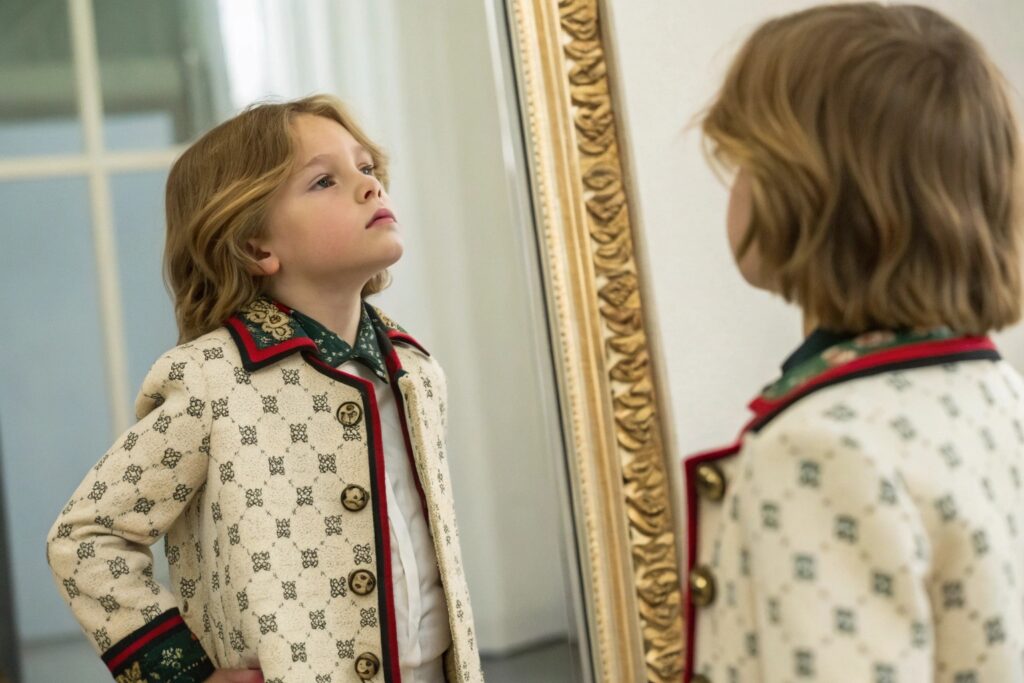
Identity lessons in fashion:
| Fashion Message | What It Might Teach Children |
|---|---|
| “What you wear = your value” | Encourages material validation |
| “Only certain brands are good” | Limits exploration and confidence |
| “Looking expensive = being accepted” | Confuses worth with price tag |
Children under 10 often mimic their parents or peers without fully understanding fashion’s symbolic meaning. That’s why experts urge balance and explanation.
Letting a child pick their own favorite color shirt may teach more confidence than dressing them in a $400 outfit chosen for status.
Are High-End Kids’ Clothes Worth the Environmental Cost?
Luxury doesn’t always mean sustainable—especially when it comes to fast-growing children who may only wear a garment a few times.
Many designer children’s clothes are produced with high-impact materials, short usage lifespans, and limited recycling paths—raising questions about their environmental footprint.
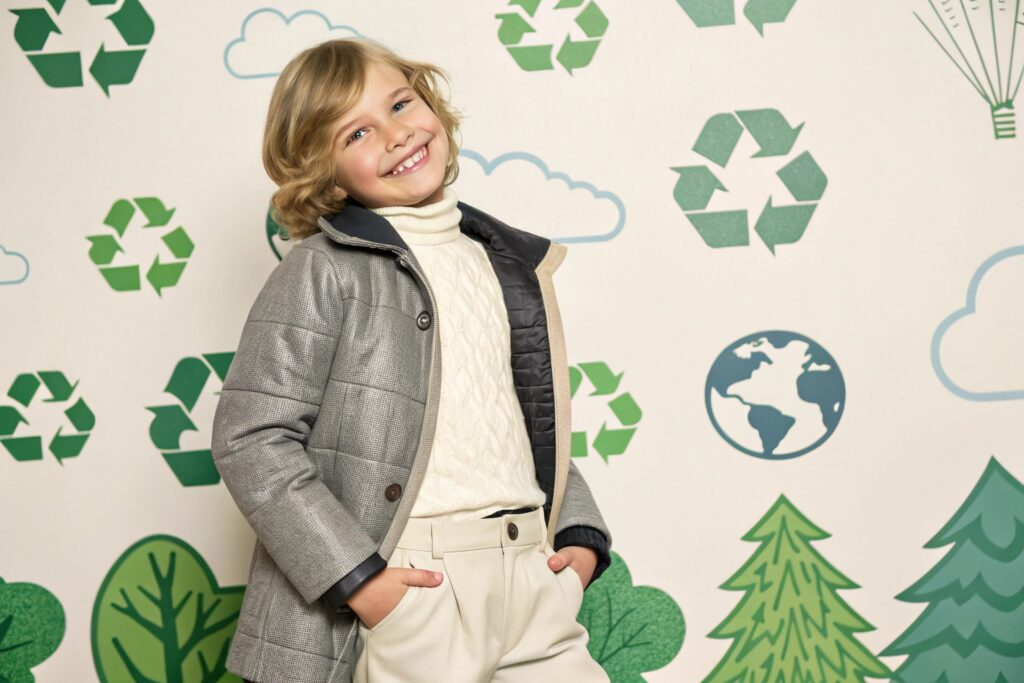
Environmental concerns of luxury kidswear:
| Concern | Why It Matters |
|---|---|
| Short wearability | Kids outgrow clothes quickly |
| Delicate materials | Less likely to be reused or donated |
| Packaging & shipping | Often uses excess wrapping and air freight |
| Limited circularity | Logos and designs may limit resale appeal |
Parents concerned about sustainability often turn to organic cotton, OEKO-TEX® certified basics, or secondhand platforms over luxury labels.
Some designer brands are shifting to eco-conscious kidswear lines, but availability and transparency still lag behind mainstream ethical brands.
What Do Parenting Experts Say About Materialism in Childhood?
Beyond fabric and fashion, the heart of the issue is what kind of values we’re encouraging in the next generation.
Parenting experts caution against overemphasizing material status through clothing, urging instead a focus on confidence, creativity, and simplicity in childhood.
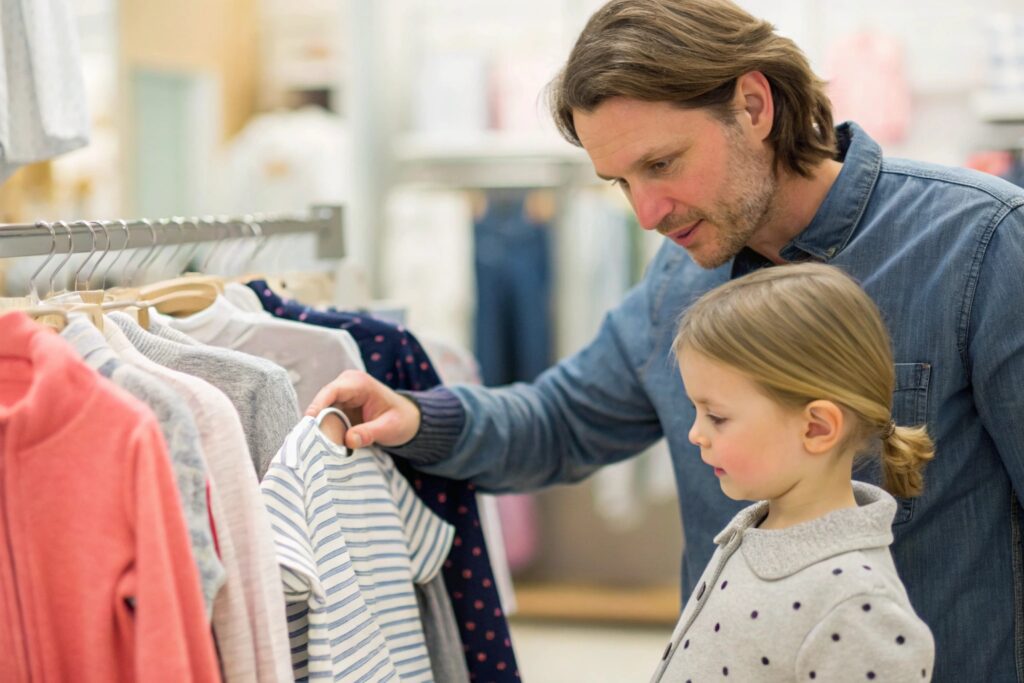
Common expert advice:
| Expert Perspective | Recommendation |
|---|---|
| Dr. Jean Twenge (author, psychologist) | Limit early exposure to brand pressure |
| Montessori educators | Prioritize function over form in kids’ wear |
| Pediatric counselors | Teach kids to value people, not products |
| Minimalist parenting advocates | Encourage need-based choices |
It’s not that luxury clothing is wrong—but that without context, it can send confusing signals.
Many professionals suggest involving children in clothing choices that reflect comfort, function, and self-expression, rather than adult tastes or status cues.
Conclusion
Dressing children in designer clothes is a personal choice—but one that carries social, psychological, and environmental weight. Ethical babywear choices start with intention. If the goal is comfort, celebration, or special moments, luxury labels can be part of the story. But when used to signal value or define identity, they may teach the wrong lesson.

